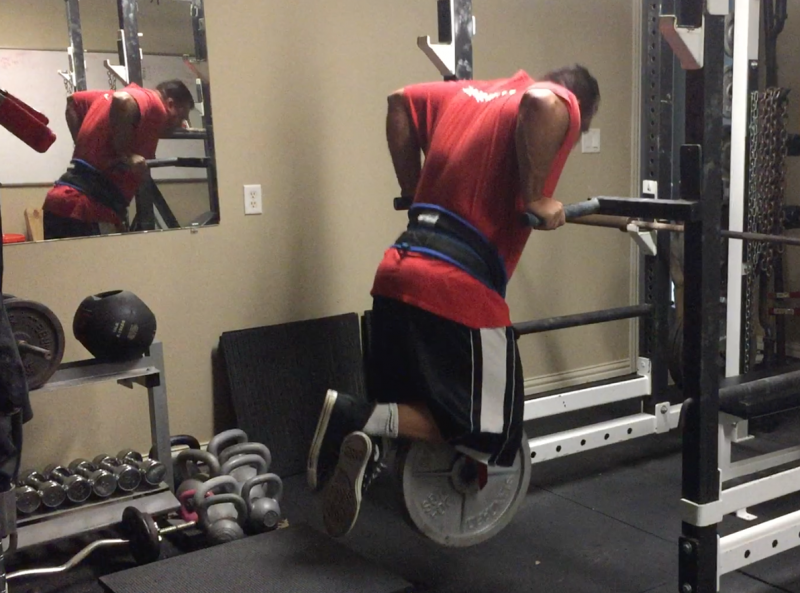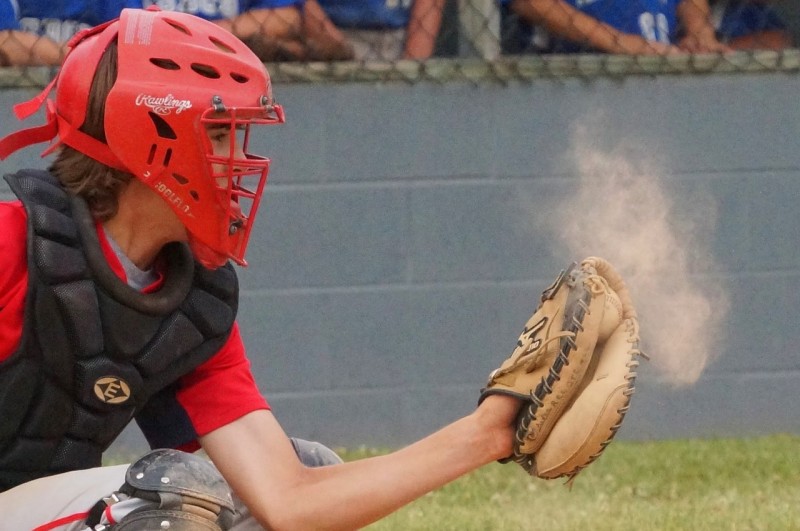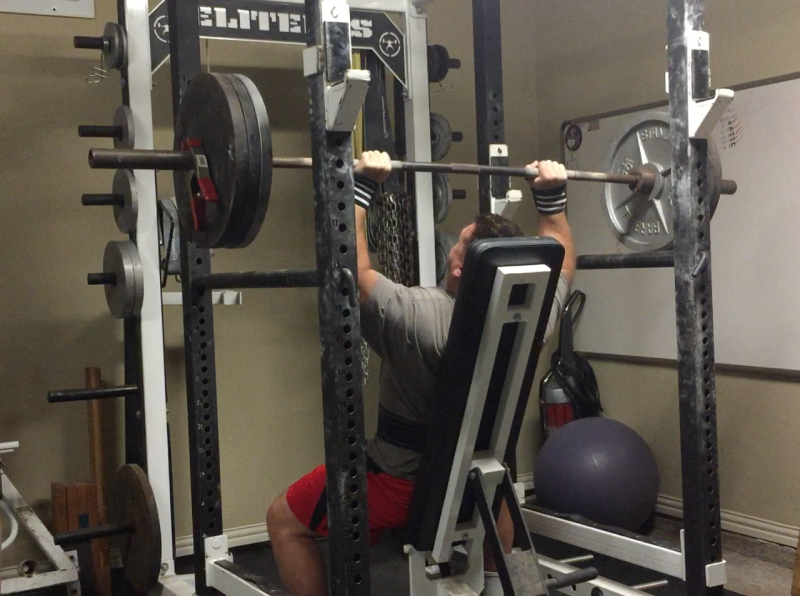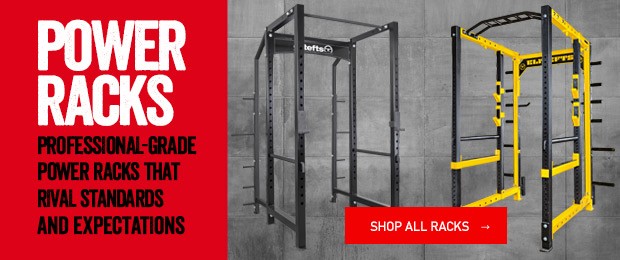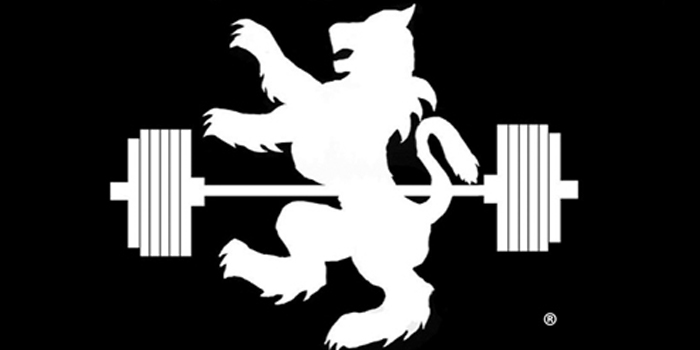
Everybody has a plan until they get punched in the mouth.
—Mike Tyson
I was embarrassed as hell the first time I brought a hip belt into a commercial gym. I can’t remember the name of the facility, but it was in Shelton, Connecticut. I didn’t have a fancy machine, so before knocking-off my reps I awkwardly hung a barbell between my legs and delicately waddled into position. I’m sure it looked as cumbersome as hell, but I didn’t give a shit.
Look at this guy. What the fuck does he think he’s doing?
I could feel the unyielding stares of the work-boot-wearing patrons boring into my psyche — tough guys just off of construction jobs. I was undaunted. I had a goal and the hip belt work was part of my plan to reach that goal. That first session was twenty years ago. I still have the same Iron Mind Hip Belt and it never lets me down. It remains one of my tools, assisting me in completing the necessary work. It’s all part of the plan.
Have a plan. That’s it. Have a plan.
—Jim Wendler at “The Big Seminar”
- Have a goal and have a plan to achieve the goal (in my experience many can verbalize their goal, but few really have a well-conceived plan in place).
- Manufacture the time to execute the plan — we all have more time than we think we have, provided we prioritize what’s important.
- Attitude is incredibly important, especially because you are going to fail along the way.
- Take the first step. Sometimes a little positive inertia is all that is needed to perform a task to catalyze positive momentum.
- Utilize a partner to keep you accountable.
Fast forward twenty years from that first hip belt training session. It’s an unseasonably cool Saturday morning in Texas and I’m using the same belt to strap a couple of plates around my waist for weighted dips. I’m nearing the end of a Maximum Effort (ME) upper body training session, comparable to that described in my last article, Navigating the Singles Scene.
I know I’m going to sound like a shill for elitefts but if you add the dip bar attachments to their Collegiate Power Rack you’ve got a bomb-proof system for upper-body training. The setup is rock steady. I wish I could say the same for my triceps. I can’t, but they’ll get there.
The training session had gone pretty well through seated military presses and bench press singles. I’d programmed the day prior and in my programming notes, I’d written that if I made it this far unscathed I would try to perform some weighted dips with 90 pounds strapped on. There’s nothing magical about that number. It was just more than I’d worked with in recent history and when I was programming it seemed reasonable so I added it to the plan.
I performed six reasonably solid repetitions on the first set, but my arms (candidly my entire upper body) were shaking like a leaf. In general, I felt really good about the session. When you’re forty-six years old and reasonably road worn there are few basic criteria for a good session:
- Emerging from the training session without a new injury (and without aggravating an old injury).
- Completing the prescribed training session (or at least 90% of the session if you were over-enthusiastic during programming).
- The undeniable knowledge that you moved some weight.
After training, I buzzed around my kitchen in a good mood while I heated some leftover steak, a thick Rib-eye, in the microwave. I was also frying eggs on the stove when my younger son ambled into the kitchen, practically dragging his feet.
“Can I cook you some eggs?” I asked, hoping he wasn’t eyeballing my steak.
“No thanks,” he said, donning a somber look. “I’m not very hungry now and I’m not in a great mood.”
“What’s the matter?” I asked. “Baseball again?”
“Yeah,” he said. “I’m still not getting any playing time.”
“I know. You have to work hard and get better.”
“I’m going to,” he said, pulling up a chair to the kitchen island. “My goal for next year is to be the best player on my team at every position.”
“Well, I like the goal in principle, but I think it’s a little too broad. Why don’t you focus on being the best at your two primary positions—pitcher and catcher? I think that might be more attainable.”
“That’s probably a better idea,” he agreed. “That will be my adjusted goal.”
I moved to the stove, realized my eggs were done—sunny side up, and added them to the plate right atop the steak.
“Now that you have cemented the goal, do you know what you need next?” I asked.
“What?”
“You have to create the plan to reach that goal. We need to think about some of the things you need to do in order to maximize the chances you’ll achieve your goal. At the end of the day, you can talk about a goal all you want, which is what most people do. The problem is most people either don’t know the correct path or, if they do know the correct path, it’s often hard for them to make the required sacrifices to successfully execute the plan.”
“Sometimes it’s hard to find the time,” he said.
“I know,” I said. “It is hard, but you have to create the time.”
“Create the time?”
“First, let’s touch on the plan at a high level. We know what you need to work on to become a better all-around player, but we also know what you need to do additionally to improve your pitching and catching skills.
“I would say you need to get stronger and even more importantly, you need to become more explosive. I’ve got you covered from a resistance training perspective, and you already know most of what to do: compound multi-joint movements (squat and deadlift). From an explosive power standpoint, we’re going to rely mostly on sprinting and jumping coupled with medicine ball work for your upper body.
“Lastly, you're going to need to dedicate additional time to your mechanics. I can’t provide the direction for that aspect of training, but you know we’ve got The Mechanic and I will provide the transportation and the funding if you are willing to put in the work. Baseball is a game of repetition, it’s very challenging to get good fast. You have to perform the repetition, which means putting in the time.”
“Sounds like a good plan,” he agreed.
I smiled and took a bite of my egg. The conversation was going better than I thought it would, given the traditional resistance to any advice originating from his parents.
“Now that we have the basics for a plan we’re going to have to work to make sure we create the time to get it done. The average person wastes so much time in a day and you waste time too. If you ever tried to calculate the wasted time, I think you’d be shocked — between television, the internet, especially social media, and video games, there are a lot of hours you burn in a typical week. We need to make sure we both repurpose that time to execute the plan and fit in all of the training and sleep (for recovery) that you are going to need to achieve your goals.
RELATED: Project Jonah: The Final Report
“Your attitude is going to be very important. You’re going to need to keep a positive attitude and continue to focus on the goal. That focus will help you suffer through some of the work, which is going to be hard and not always fun. I think once you get started in the right direction the results will come fairly quickly, especially at your age, and that will help you build momentum.
“Lastly, and I think this is important too, I’d like to ask your permission to be your accountability partner?”
“What’s an accountability partner?”
“After we formalize your plan, I’m going to help hold you accountable to the plan by checking and monitoring your progress on a weekly basis. We’ll work together. I will share with you some of my training plans and you can hold me accountable for my work and I will do the same for you. That way, if one of us should fall off the path, we have the other available to lend additional support.
“What do you think?” I asked.
“I like it. I think it’s a good plan,” he said. “I just have one question.”
“What’s that?”
“Are you going to eat all of that steak?”
This is in no way a veiled lobby for a training log, but for those of you that read my last article — Navigating the Singles Scene, here’s my most recent full ME Upper Session (see below). It’s tangential to this article, but I wanted to include it because I had it readily available, and it is part of my plan.
For those who didn’t read the article, I discussed a training experiment where I am working on my pressing strength by relying mainly on military pressing (standing and seated), dips, and infrequent bench press singles work.
SEATED MILITARY PRESS
I perform these reps in the Collegiate Power Rack. I set the rod and pipe safety pins slightly below chin level and start the first rep from the bottom position right off the pins. My maximum single for seated military is approximately 315 pounds, to give some context to percentages.
- 2 x 10 x 45
- 10 x 95
- 5 x 95; felt I needed additional warm up
- 10 x 135
- 5 x 155
- 5 x 185; add belt for this set
- 5 x 225; add belt and wrist wraps for this set — great control over the weight
I moved the safety pins up one hole so the bar was even with my chin and added elitefts pro mini resistance bands (red bands) to the bar to create additional resistance at the top of the lift. I have no idea how much additional resistance, nor do I really care.
- 5 x 185; add belt for this set and the aforementioned red bands
- 5 x 225; add belt and wrist wraps for this set + red bands
- 5 x 250; add belt and wrist wraps for this set + red bands
BENCH PRESS
I’m utilizing a fairly close grip with my thumbnail on the smooth part of the Texas Power Bar.
- 1 x 135
- 1 x 235
- 1 x 325
- 1 x 425 — explosive rep
- 1 x 380
- 1 x 380
Intended to do more singles here, but with the shoulder fatigue thought it was better to cut here.
DIPS
- 1 x 5 bodyweight
- 1 x 6 + 45 pounds strapped around my waist
- 1 x 6 + 90 pounds strapped around my waist
- 1 x 6 + 90 pounds strapped around my waist
PRONATED DB FLIES
I nabbed these from Carlos Reyes’ training log on elitefts. It’s a trove of great training information and Carlos is a fantastic technician.
3 sets of 15 with very light dumbbells










